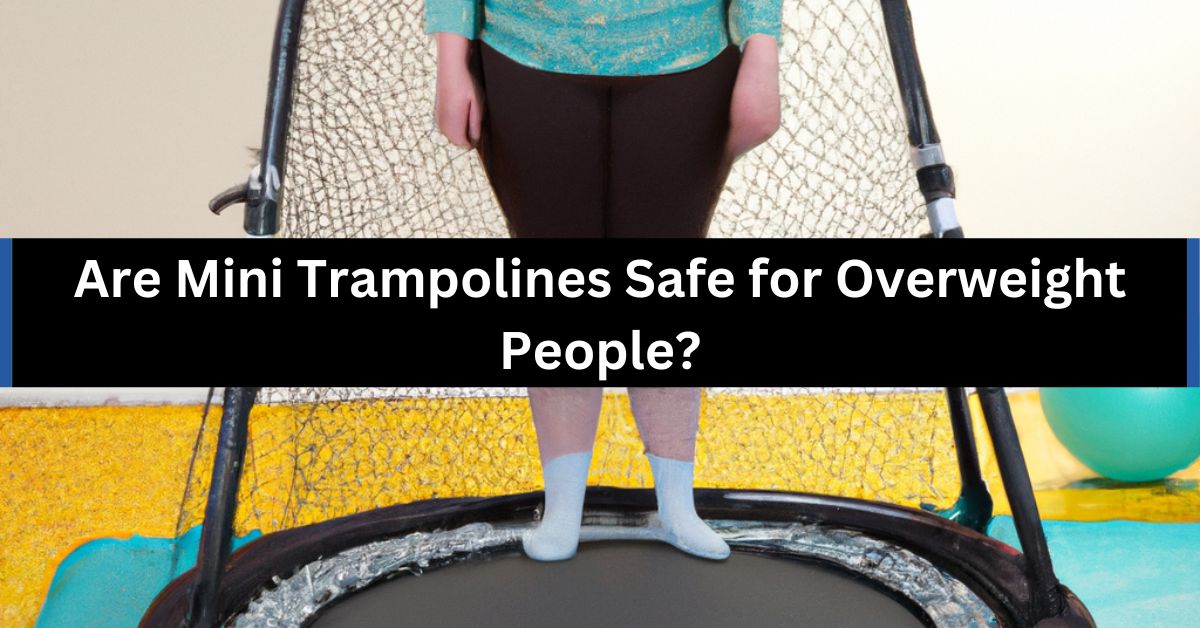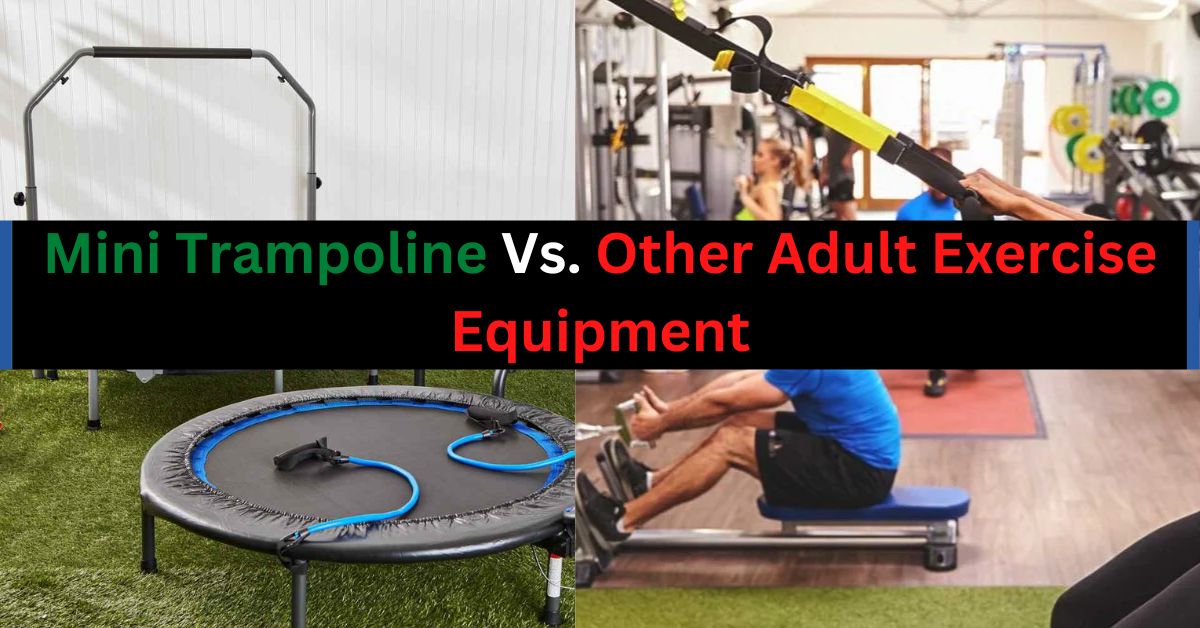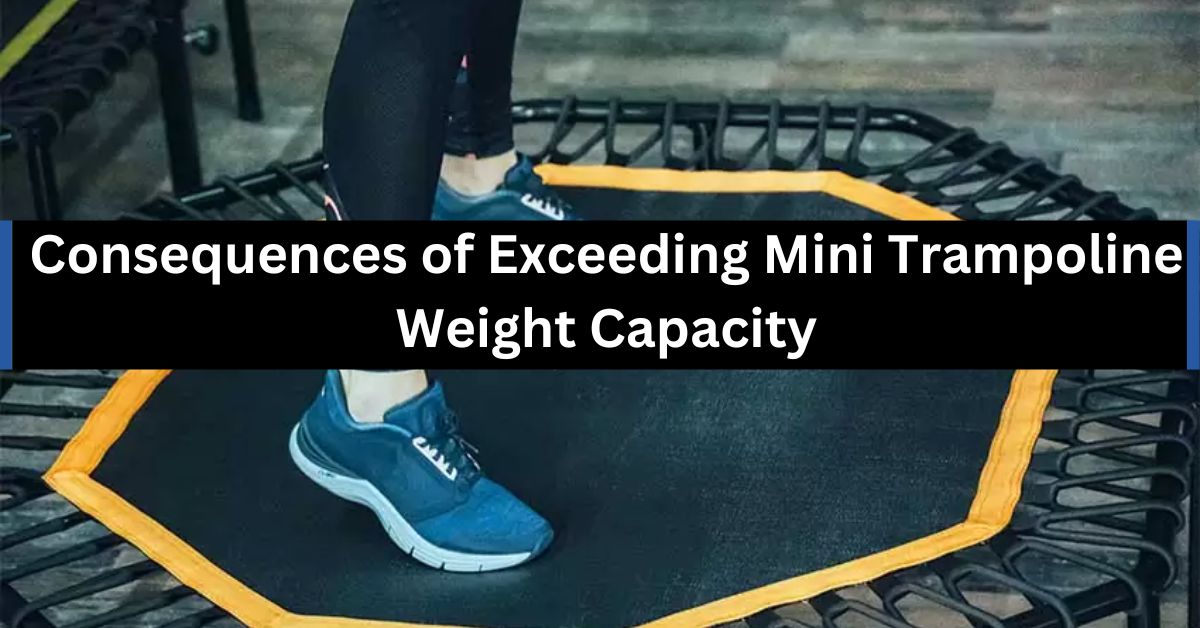As an overweight person, I know all too well how tough it can be trying to work through the health benefits of using exercise equipment. Being overweight can put a huge strain on our joints and bones, and the thought of using a mini trampoline to get some exercise can seem a bit intimidating.
After all, who hasn’t seen videos of people who have gone flying off the trampoline only to land with a bruised bottom or, worse, a fracture?
So, is a mini trampoline safe for overweight people? In short, yes. It is important to keep in mind, however, that safety measures must be taken when using a mini trampoline.
Benefits of Mini Trampolines for Overweight People
There are many potential benefits of using a mini trampoline for overweight people:
- Low Impact Exercise – The bouncing motion of a mini trampoline provides a low impact exercise that is gentle on the joints. This makes it accessible for overweight people who may have pain or difficulty with higher impact activities like running.
- Increased Cardiovascular Health – Jumping on a mini trampoline can raise your heart rate and improve cardiovascular fitness. Studies show rebounding is an effective way to improve circulation and oxygen uptake.
- Muscle Toning – The light resistance provided by bouncing can help tone and strengthen core muscles like abdominals and back muscles. This can help overweight people build muscle to support the joints.
- Weight Loss – The combination of a light cardio workout with muscle toning makes mini trampolines a beneficial tool for encouraging weight loss through increased calorie burn.
- Stress Relief – The bouncing motion releases endorphins that can relieve stress and improve mood. This makes mini trampolines an appealing option for overweight people seeking a fun activity.
Potential Risks of Mini Trampolines for Overweight People
However, there are also some potential risks of using a mini trampoline while overweight that need to be considered:
- Joint Pain – Jarring impact from jumping may aggravate existing joint pain in the knees, hips or ankles. Overweight people are more prone to osteoarthritis and joint injuries.
- Soft Tissue Injuries – The rapid bouncing motion can strain muscles like calves and quadriceps. Overuse may also cause Achilles tendonitis.
- Balance Problems – Obesity makes maintaining balance and control while jumping more challenging. This increases the chances of falls or improper landing.
- Cardiovascular Issues – Jumping rigorously can spike blood pressure to unsafe levels in some overweight people. Those with heart conditions need medical guidance before starting rebounding.
- Improper Form – Overweight beginners are more likely to develop poor jumping form by overarching the back or landing improperly. This can lead to injury over time.
Safe Use Tips for Overweight People
Despite the risks, mini trampolines can be used safely by overweight adults if proper precautions are taken:
- Consult a Doctor First – Speak with your physician before beginning a mini trampoline routine, especially if you have health conditions like heart disease or diabetes.
- Start Slowly – Begin with just 5-10 minutes of gentle bouncing to acclimate to the motion and allow your body to adapt. Increase duration and intensity slowly over several weeks.
- Maintain Proper Form – Keep knees and ankles slightly bent when landing, with feet shoulder width apart. Maintain upright posture. Avoid arching backwards.
- Use Handrails – Hold onto handlebars or handrails mounted on the trampoline frame to help keep balanced and aligned.
- Wear Supportive Shoes – Use athletic shoes with cushioned soles and good arch support. Bouncing barefoot can strain feet.
- Bounce Lightly – Focus on light, controlled bounces no more than 1-2 inches high to reduce impact on joints. Keep head stable.
- Stop If in Pain – Immediately cease jumping if you feel any joint, muscle or cardiovascular pain or discomfort.
Choosing the Right Mini Trampoline
If you are overweight but still interested in rebounding, choose an appropriate mini trampoline designed to support your weight:
- Weight Limit – Only use trampolines rated for your weight. Most support 200-250lbs but some go up to 300+ lbs capacity.
- Mat Size – Larger mat sizes (40+ inches wide) provide more room for foot placement and stability.
- Mat Material – Durable elastic polypropylene mats reduce impact better than cheaper spring mats.
- Spring Number – Models with 80+ springs give more even bounce response across the mat.
- Leg Support – A sturdy steel frame with 6+ legs provides maximum stability.
- Adjustable Height – Getting low to the ground reduces risk of injury from falling. Look for adjustable leg heights.
The Bottom Line
While mini trampolines do present some risks if used improperly, they can be an effective low-impact exercise option for overweight adults if approached cautiously. Focus on working up slowly while using proper form and supportive equipment. As with any new exercise regimen, consult your physician first and listen to your body to avoid injury. With patience and common sense, rebounding can be a fun activity on your weight loss journey.





